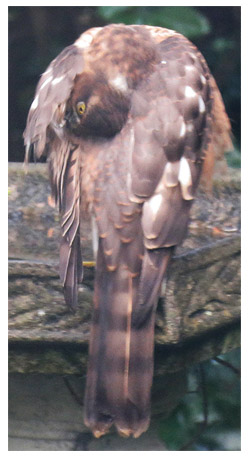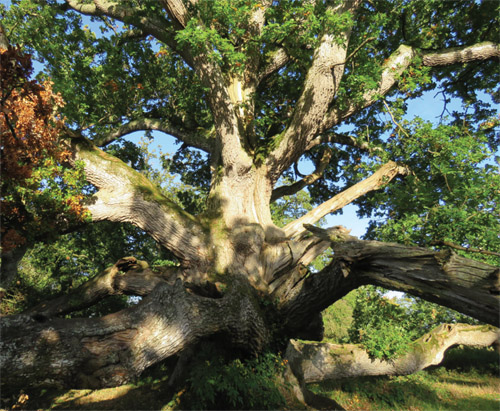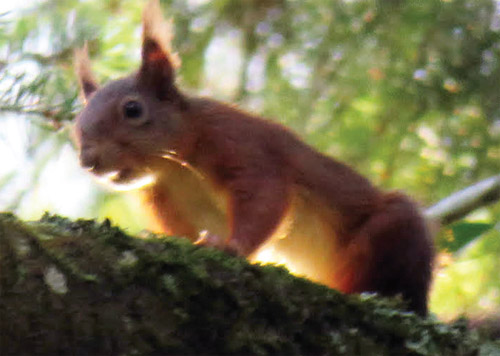| December
/ 2018 - Michael Ryan
|
| We’d
gone to Tullamore for a couple of days, visiting a relative who’d
had a brief stay in hospital but was now making a good recovery. Amazingly
sharp minded with a perfect memory and, apart from recent problems,
remarkably fit at 93 years of age, she was a mere youngster in comparison
to another living being we got to visit in Tullamore. In Charleville
Forest, just outside the town, grows the King Oak, believed to be
the oldest living oak tree in Ireland. It’s a pedunculated oak,
one of our two native oak species, the other being the sessile oak. |
|
|
Despite
being dead it probably supported as much, if not more, life than the
King Oak, providing nest space for birds and bats and supporting multitudes
of insects and fungi in the decaying timber. We continued down the
driveway then went off the main avenue to wander down a path through
the woods and almost instantly set off a raucous calling of jays,
spotting one’s distinctive white rump disappearing through the
trees. Acorns are one of the jay’s favourite foods and individual
jays carrying up to five acorns in their crop at a time can bury up
to 3000 a month, having a remarkable ability to remember where they
can recover them but inevitably a few acorns will germinate (Some
years ago a radio documentary about jays was titled ‘The Oak
Tree Planters’) and indeed it’s possible the great King
Oak may have begun life by being planted by a jay. Acorns are a favourite
food of grey squirrels as well although extremely toxic to red squirrels
until they’re fully ripe. |
||
|
|
|
This
is considered another advantage greys have over reds and although,
likejays,
grey squirrels will cache acorns in the ground they tend to bite into
the seed while they’re carrying them thus rendering them incapable
of germinating. So you wouldn’t be surprised to find greys in
an oak wood but when Lucy heard, then located a squirrel in a larch
treetop high above us and we were delighted to see it was actually
a red squirrel. The trees lining the avenue were predominantly oak,
more noble specimens with spectacular clumps of fungi and great rounded
knots of wood on their trunks but intermingled with them were larches
and Scots pines which would have provided food for the reds. It was
nice to see it was a thriving regenerating wood as well since there
were many oak saplings springing out of the ground. The only downside
of the forest was a gloomy line of rhododendrons, dark and oppressive
alongside one path supporting no birds or other life |
||
| |
||||
| A
sparrowhawk perched on the edge of our stone bird bath just feet away
from a couple of bird feeders hanging from a bush. We hadn’t
seen her land so don’t know if she had come for a drink, a wash
or to try and catch a bird coming in for some sunflower seeds but
there it was, content to perch almost motionless for ten minutes before
I accidentally startled it and she flew off. Sorry to have disturbed
it but no need to worry because she was back in the same place a few
minutes later.
|
  |
|||
|
The female Sparrowhawk sat on the bird bath for over an hour Photo: Michael Ryan |
She
would twist her head around at seemingly impossible angles to preen her plumage Photo: Michael Ryan |
|||
DALKEY
HOME PAGE | DALKEY
COMMUNITY COUNCIL | DALKEY
HERITAGE COMPANY | CANNONAID




